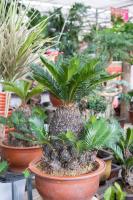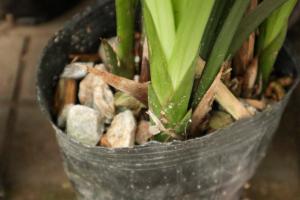How to Disinfect a Plant Pot
Plant pots are essential gardening tools that require proper cleaning and disinfecting to prevent the spread of plant diseases and pests. Disinfecting a plant pot is a simple process that can be done using several methods. In this article, we’ll discuss the most effective ways to disinfect a plant pot.
Method 1: Hot Water and Soap
The easiest and most common way to disinfect a plant pot is by cleaning it with hot water and soap. This method works well for small pots made of plastic, ceramic, or terracotta.
Here’s how to disinfect a plant pot using hot water and soap:
Remove any remaining soil and debris from the pot.
Fill a clean sink or bucket with hot water and add dish soap.
Soak the plant pot in the soapy water for about 20-30 minutes.
Scrub the pot with a brush or sponge to remove any remaining dirt or stains.
Rinse the pot thoroughly with clean water and let it dry completely.
Once the pot is dry, you can start planting your next plant.
Method 2: Bleach Solution
If you’re dealing with a plant pot that has been infected with a pest or disease, you may need to use a stronger disinfectant. A bleach solution is a powerful disinfectant that can kill most viruses, bacteria, and fungi that may be present in the pot.
Here’s how to disinfect a plant pot using a bleach solution:
Mix one-part bleach with nine parts water in a bucket or large container.
Soak the plant pot in the bleach solution for about 10-15 minutes.
Scrub the pot with a brush or sponge to remove any remaining dirt or stains.
Rinse the pot thoroughly with clean water and let it dry completely.
Note: If the plant pot has any metallic parts, avoid using a bleach solution as it can cause rusting.
Method 3: Vinegar Solution
Vinegar is another natural disinfectant that can help kill germs and bacteria in a plant pot. It works well for pots made of plastic, ceramic, or terracotta.
Here’s how to disinfect a plant pot using a vinegar solution:
Mix equal parts of water and white vinegar in a bucket or large container.
Soak the plant pot in the vinegar solution for about 10-15 minutes.
Scrub the pot with a brush or sponge to remove any remaining dirt or stains.
Rinse the pot thoroughly with clean water and let it dry completely.
Once the pot is dry, you can start planting your next plant.
Conclusion
Disinfecting a plant pot is an essential part of gardening that can help prevent the spread of plant diseases and pests. By using these simple methods, you can ensure that your plant pots are clean and safe for your plants to grow.
Remember to always wear protective gloves and clothing when handling disinfectants, and follow the instructions carefully to avoid damaging your plant pots or plants.

 how many times do yo...
how many times do yo... how many planted tre...
how many planted tre... how many pine trees ...
how many pine trees ... how many pecan trees...
how many pecan trees... how many plants comp...
how many plants comp... how many plants can ...
how many plants can ... how many plants and ...
how many plants and ... how many pepper plan...
how many pepper plan...































